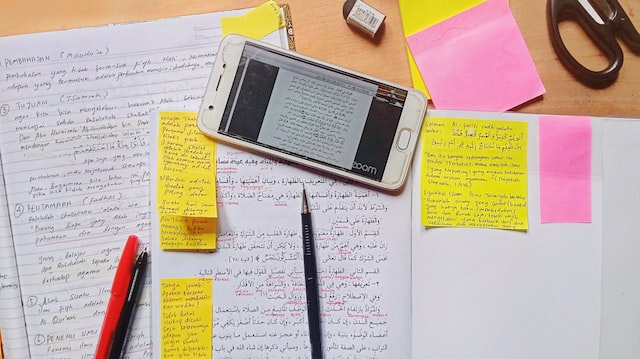The Effect Of Sodium Chloride On The Swimming Behavior Of Paramecium
Paramecium, a one-celled organism of the kingdom Protists, is found in freshwater environments. It is found in freshwater environments and has hair-like structures called cilia. It can move forwards and backwards with the help of its cilia. It helps to “bring in” the nutrients. Parameciums make a good cell for studying because they respond differently to stimuli. The cells can be observed easily and their cell membrane is “filled with many proteins, such as calcium, sodium, and potassium ion channel”. The channels on the cell wall allow ions pass from areas of high concentration to areas of low concentration. This is what controls the Paramecias “swimming behavior”. (Clarke et al. Table salt is sodium chloride, NaCl.
Physically, sodium chloride appears as a white cube. It helps maintain blood pressure and is vital for absorbing and transporting nutrients and maintaining the correct fluid balance. The body will experience problems with too much or not enough NaCl. We decided, therefore, to see what happened when we introduced sodium chloride into the Paramecium’s environment. The Paramecium’s behavior was altered when it was exposed chemically in previous experiments. We were curious to know how NaCl in the water would affect their behavior. We hypothesized that adding NaCl would cause the vector changes to increase. The null-hypothesis was then that vectors changes per second would decrease if NaCl were added to Paramecium. For the experiment, we required Paramecium Tetraurelia, NaCl, 1xDryl’s Medium, Pipettes, Dissecting Microscopic, Millimeter Grids, Electrophoresis Cells, and a graduated cylinder of 50mL/100mL. The independent variable of this experiment was sodium, while the dependent variables were the behavior and number of vectors that changed each second. The Paramecium Tetraurelia culture is the standard variable, as are Dryl’s solutions, electrophoresis, and Dryl solution. The experiment contains two treatment levels. The first treatment level was performed without adding NaCl into the Dryl solution. Second level treatment is conducted by adding NaCl with Dryl’s Solution. Control treatment consisted of adding NaCl to Dryl’s Solution without any additional NaCl. Six replications were done and the sample size was 12.
We began the treatment with 250 mL Dyl’s alone. First, we gathered all the materials. Then, we connected the dissecting microscopy. After collecting 250 mL Dryl solution in a graduated container, we poured the solution into the chamber. Then, we placed a millimeter-grid on the stage and poured in the Paramecium cultures. We observed the Paramecium in turn after waiting one minute for the Paramecium’s environment to become familiar. The person holding the stopwatch would tell the person observing to start the stopwatch after they had focused on the Paramecium. After focusing on a Paramecium, the observer would instruct the person holding the stopwatch that they should start the stopwatch. Once the stopwatch blinked to alert the observer, ten minutes had passed, they counted how many vectors Paramecium completed in ten second and divided this by 10. The experimental treatment was started after four data-recording observations by each participant.
Dryl’s solution was added to NaCl in the experimental treatments. In order to keep the volume constant at 250 mL we used 225 mL Dryl’s and 25 mL sodium chloride. After thoroughly cleaning the electrophoresis tube, we added 25 mL NaCl and 225 mL Dryl’s from the graduated bottle. We then added the Paramecium and waited 1 minute for it to become accustomed to the NaCl. The control treatment was then performed, with each person observing a Paramecium in the lab for 10 seconds. Another person kept the stopwatch. We compared each individual’s data after they had entered their observations. We calculated mean, standard deviance, and the t-test. Figure 1 shows the data on vector changes per second, both for the experimental and control treatment. The columns are the averages of vector changes per seconds for the two treatment levels: experimental and the control. The error bars show the standard deviation of each. The figure shows that the number of vector changes per sec decreased when NaCl is added. It is impossible to tell if this difference was due to NaCl. The control treatment’s mean was 1. The mean for the control treatment is 1. 453 vectors/sec. The mean of the experimental treatments was 0. The standard deviation for the experimental treatment was 0. 280vectors/sec. Table 2 shows that the “t-calculated” was 1. Table 2 shows that the?t-calculated? was 1. 654 degrees of liberty is 172. The?tcalculated? The?t-calculated’ was lower than tcritical at 95%. This means that the experimental treatment and control treatment did not differ significantly. Discussion and conclusions:
The class hypothesized that NaCl would cause the vector changes per seconds to increase. The data we collected did not support the class hypothesis. The null theory was true. It stated that NaCl presence would cause a decrease in the vector change per second. The results showed that the vector change per second decreased in the experimental groups. However, because the difference is so slight, it’s hard to determine if this was caused by the NaCl. The difference could be due to the slower culture in the experimental group. Also, it’s possible the NaCl amount added to Dry solution was too low for better results.
In the future it may be possible to introduce new treatment levels, with each having a control and an experimental treatment. Each level will have varying amounts of NaCl. The hypothesis can be proved if the NaCl amount is increased. Alternatively, you can use a simple guideline to calculate the number of vectors changes. Some people might consider a small turn as a change in vector, while others may say that a change in vector is when you flip the direction. A guideline will help everyone measure vector changes accurately, and eliminate confusion.




0